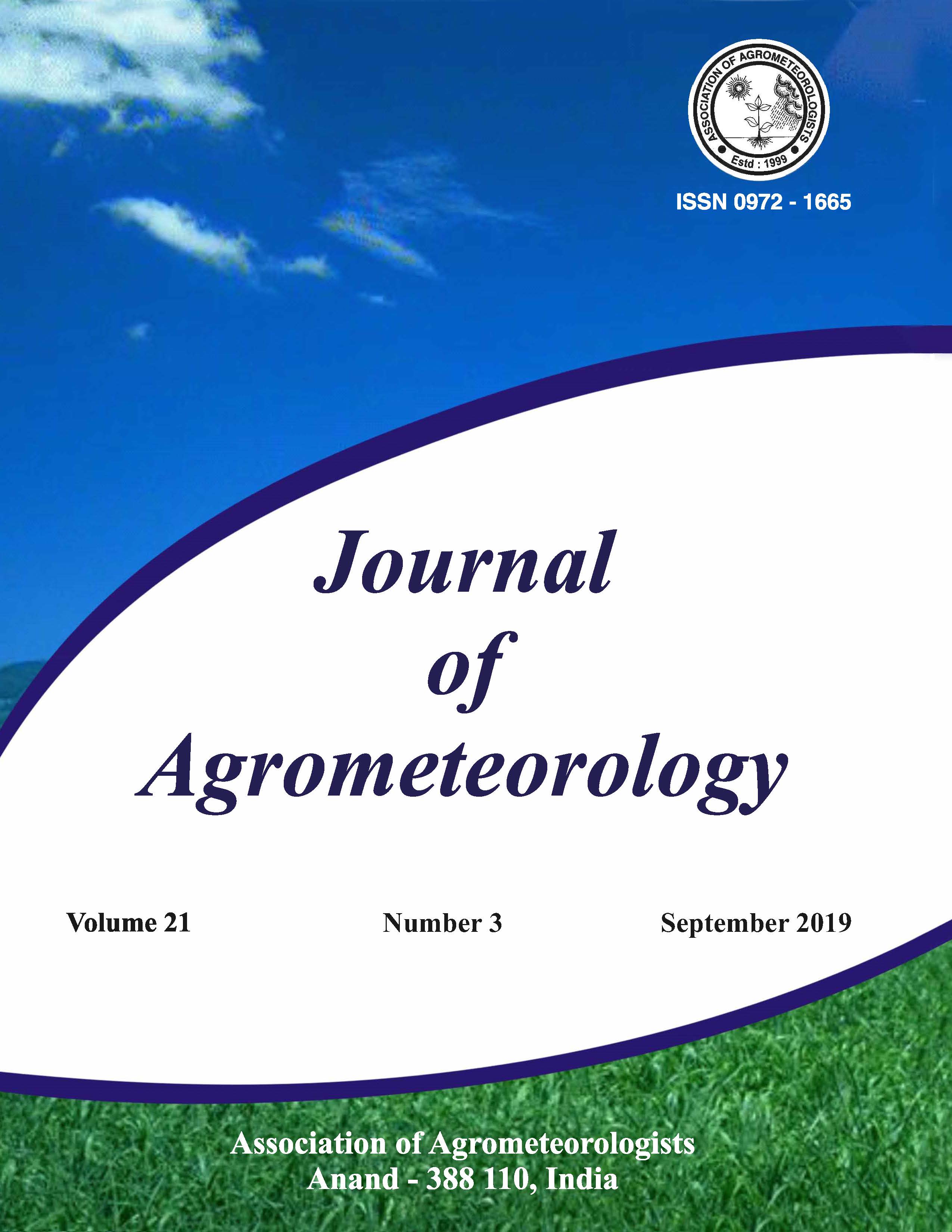Assessing suitability of temperature-based reference evapotranspiration methods for semi-arid basin of Maharashtra
DOI:
https://doi.org/10.54386/jam.v21i3.259Keywords:
FAO Penman-Monteith method, temperature-based Penman-Monteith method, Hargreaves method, ET mapping, limited data, semi-arid regionAbstract
FAO Penman-Monteith (FAO-PM) is deemed as a sole standard method for estimating reference evapotranspiration (ET ). However, limited availability of meteorological data at spatial and temporal o scales restricts the application of this method. To address this issue, the FAO 56 experts suggested three methods when only maximum and minimum temperature data are available: (i) Temperature-based Penman-Monteith (PMT-1) method wherein T ≈ T (ii) PMT-2 wherein T ≈ T -2.5, and (iii) dew min dew min Hargreaves method. These ET methods were assessed for a semi-arid basin of Western India which lacks adequate climatic data. The performances of the ET methods were evaluated against the standard FAO-PM method using salient statistical and graphical indicators, together with the sensitivity analysis. The results of the three temperature-based methods had a tendency of over-predication of ET in the study area. The PMT-1 method, however, provided superior ET estimates compared to PMT-2 and Hargreaves methods. For estimating monthly ET , the FAO-PM method was most sensitive to temperature. Further, ET of the monsoon season over the study area increased from 5 to 12% during 'drought' years compared to 'normal' years. It was concluded that PMT-1 method is the most suitable temperature-based method for estimating ET in semi-arid regions under limited climatic condition.
Downloads
Published
How to Cite
Issue
Section
License

This work is licensed under a Creative Commons Attribution 4.0 International License.
This is a human-readable summary of (and not a substitute for) the license. Disclaimer.
You are free to:
Share — copy and redistribute the material in any medium or format
Adapt — remix, transform, and build upon the material
The licensor cannot revoke these freedoms as long as you follow the license terms.
Under the following terms:
Attribution — You must give appropriate credit, provide a link to the license, and indicate if changes were made. You may do so in any reasonable manner, but not in any way that suggests the licensor endorses you or your use.
NonCommercial — You may not use the material for commercial purposes.
ShareAlike — If you remix, transform, or build upon the material, you must distribute your contributions under the same license as the original.
No additional restrictions — You may not apply legal terms or technological measures that legally restrict others from doing anything the license permits.
Notices:
You do not have to comply with the license for elements of the material in the public domain or where your use is permitted by an applicable exception or limitation.
No warranties are given. The license may not give you all of the permissions necessary for your intended use. For example, other rights such as publicity, privacy, or moral rights may limit how you use the material.





